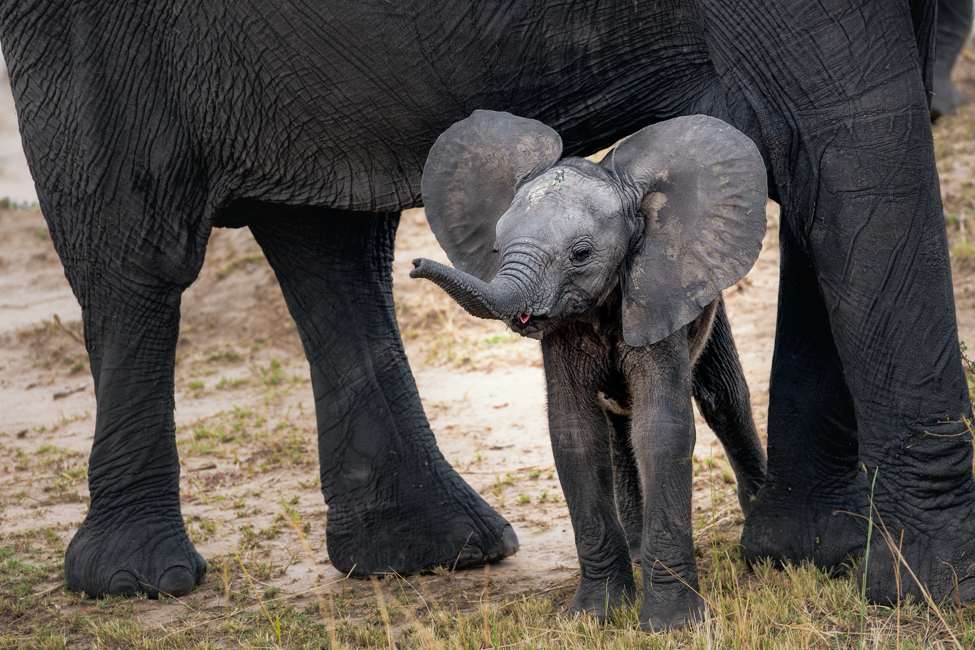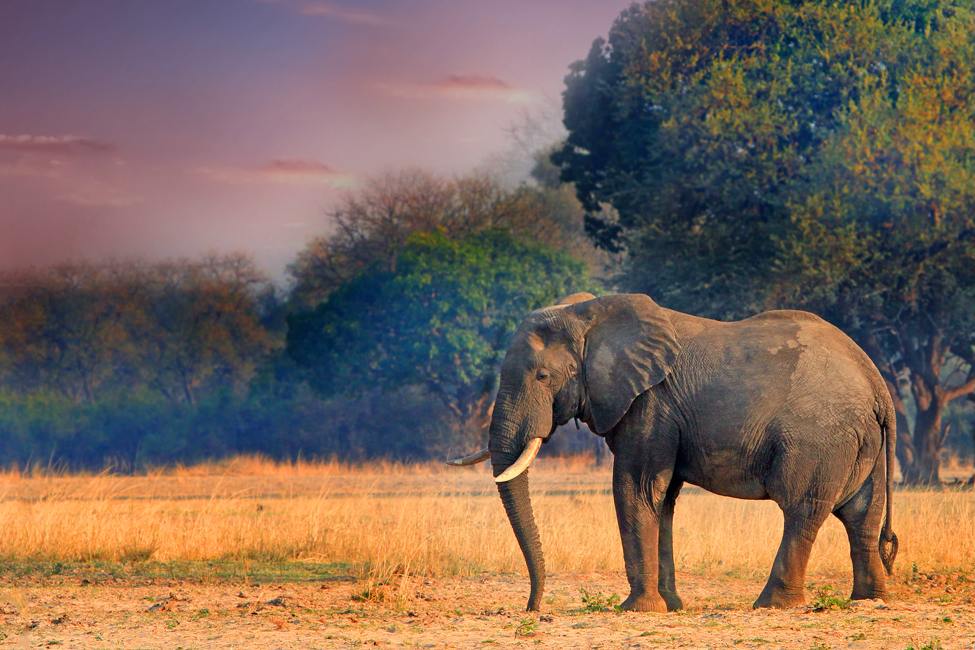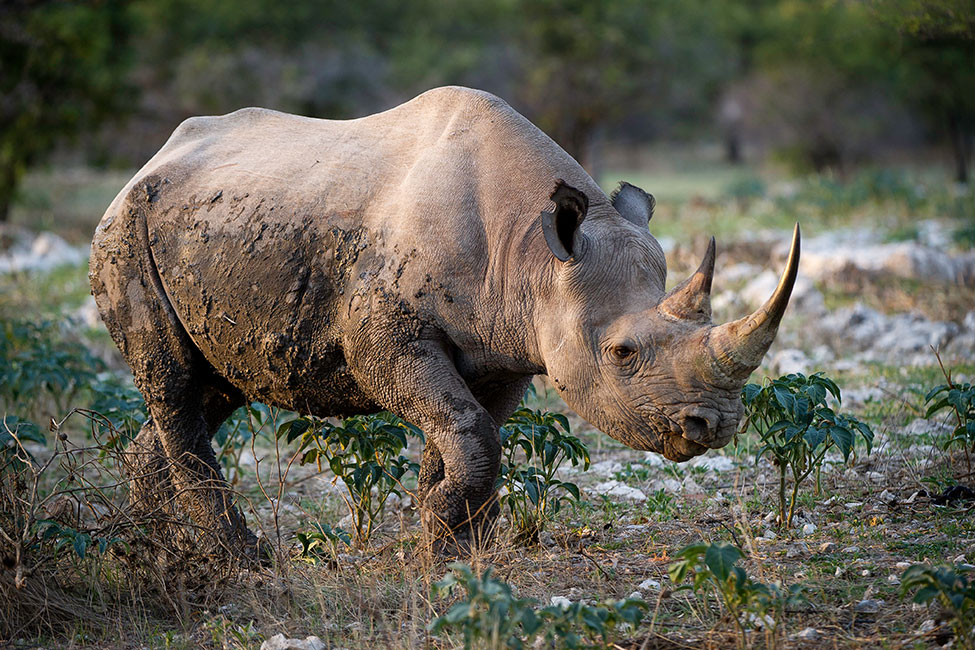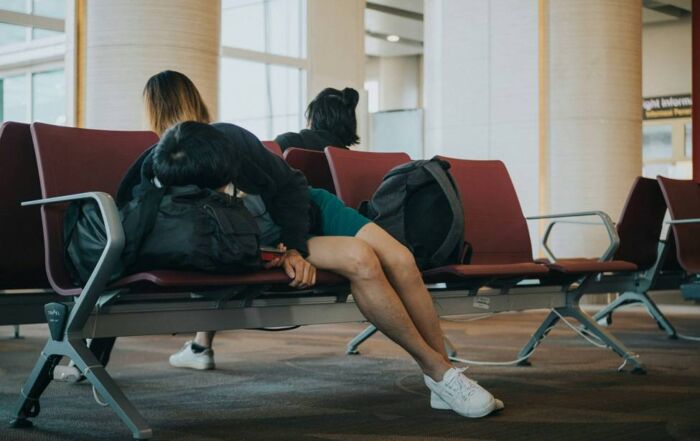Photo courtesy and copyright of Ongava Lodge.
Safari Wildlife Hides Give You a Close-Up View of Animals
On my first safari to Namibia with my kids, we had the delightful experience of watching animals from a wildlife hide.
What’s a hide? It’s a small structure in a natural area where humans can “hide” themselves to get up-close views of wildlife—views that would be nearly impossible to get out in the open.
Safari hides are especially popular among photographers who want to get the perfect shot of African wildlife. Some private reserves in Africa build permanent wildlife hides near areas with a lot of animal action to guarantee close sightings for guests.
While at Etosha National Park, we stayed at Ongava Lodge, which is known for its excellent hide overlooking a waterhole that attracts animals throughout the seasons. It’s just a short walk through a covered walkway from the main part of the lodge.
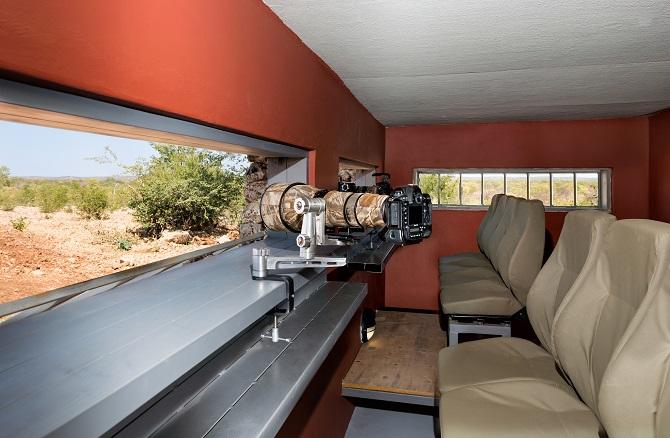
Wildlife-viewing hides generally feature a narrow window that provides a good view out, but prevents animals from seeing the activity inside. Photo courtesy of Ongava Lodge.
An Evening in the Hide
Our guide, Franco, suggested we visit the wildlife hide a little after 5 p.m. for some action-packed viewing. As we entered, we made ourselves comfortable on four of the room’s sixteen seats, and lodge staff brought drinks and appetizers. Small bars reinforced the window every ten or so inches for safety. They didn’t interfere at all with the view of the waterhole just a few dozen feet away.
We watched the waterhole come slowly alive. It started with the red-billed queleas—small, sparrow-like birds. At first, little bands trickled in from different directions to congregate in the nearby mopane trees. Soon it was a torrent of birds! Now numbering in the hundreds or even thousands, they weighed the branches down to what looked like the breaking point.
En masse they left the trees, moving like a synchronized school of fish, to settle down and surround the waterhole to drink. The swarm must have been as big as the waterhole itself.
Unbeknownst to them, someone was waiting for them under the surface of the water—hungry freshwater turtles known as terrapins. The terrapins didn’t take long to bite, sending most of the queleas in a panicked swarm back to the mopane trees. But not all the queleas managed to escape. A few fluttered in the water, trying to free themselves from the terrapins’ jaws. Some succeeded, while others were pulled beneath the surface.
This scene repeated itself several times over the next few minutes—despite the risk, the queleas kept returning to the water because they needed to quench their thirst.
Then, as suddenly as they had arrived, they disappeared, scattering in small groups until not a single one was left. The sun continued to fall below the horizon.
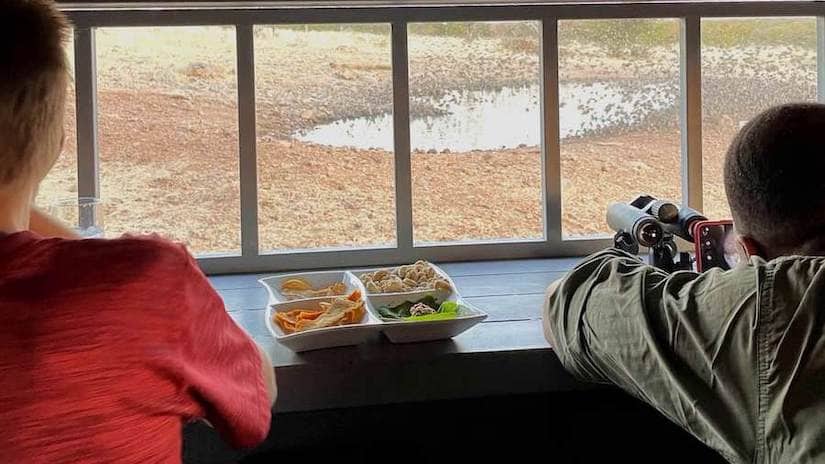
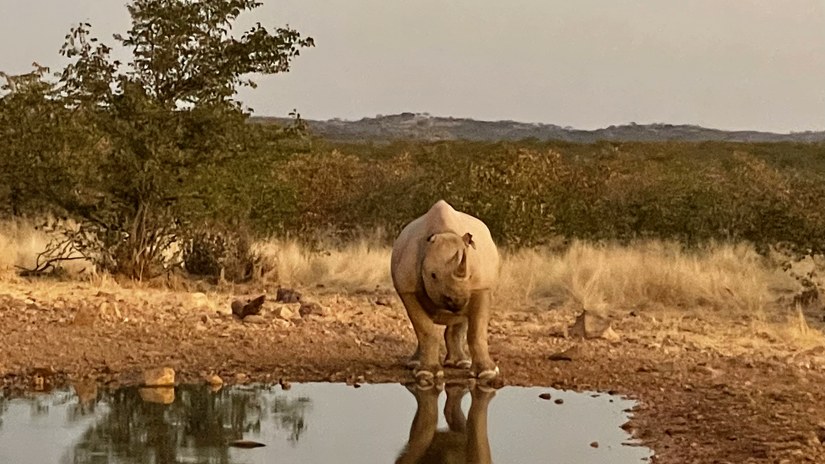
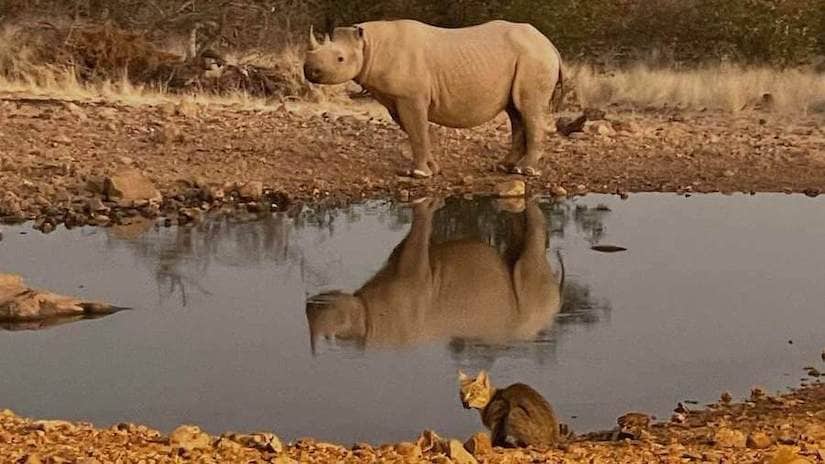
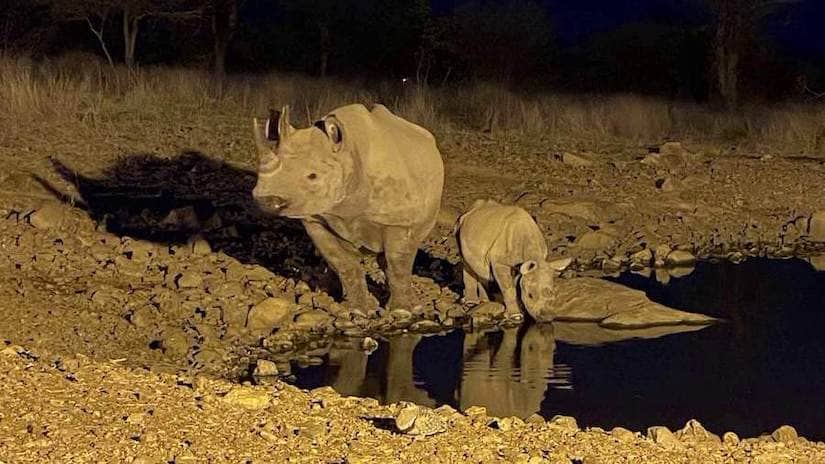
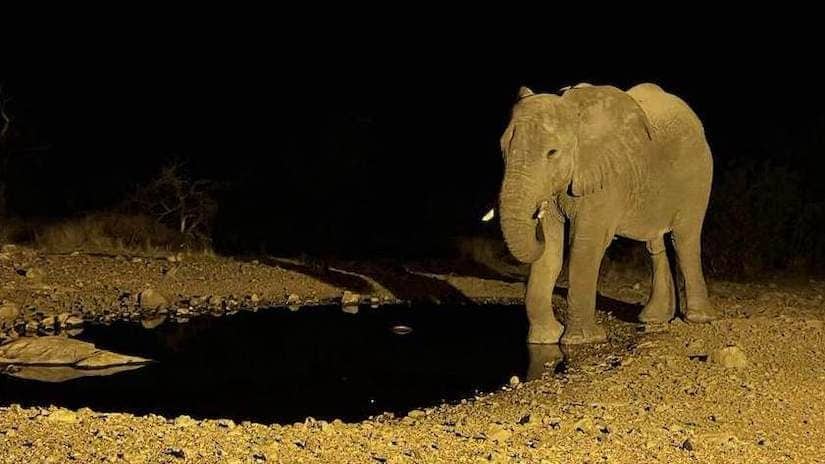
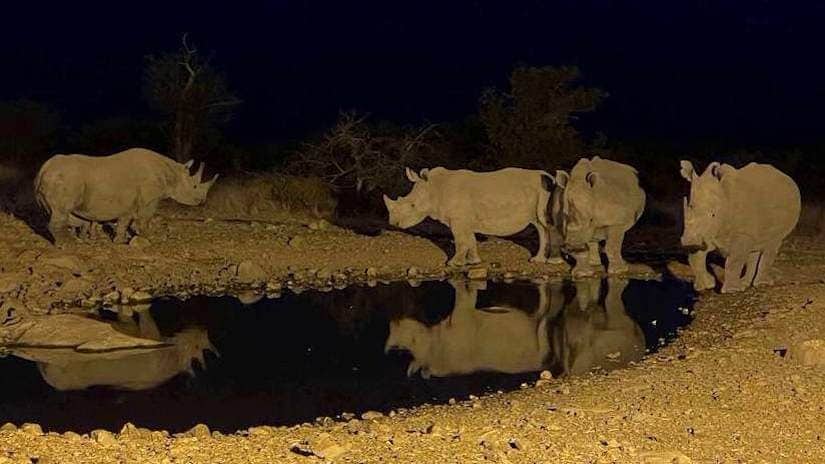
I used my phone to snap a few photos at the Ongava hide: red-billed quelea, a male black rhino and African wildcat, a black rhino mom and her calf, an African elephant, and a mixed group of black rhinos and white rhinos.
Spying on rhinos, a rare cat, and more
We heard our next guest before it could be seen. Its arrival was signaled by the crunching of rocks under its tremendous weight. It was a beautiful male black rhino! He slowly made his way to the water, keeping an eye out for trouble. We could hear him slurping up water all the way from the hide—that’s how big he was.
Then, out of the corner of my eye, I spotted another movement. An African wildcat sauntered onto the scene. This is an extremely elusive species—so elusive that I had never seen one before in all my trips to Africa. About the size of a large housecat, but with longer legs, this solitary species is mainly nocturnal and hunts rodents, hares, frogs, insects, and fish. But it had no interest in hunting right then. It gracefully circled the waterhole, stopping every now and then to take its fill.
Then came cocktail hour! No, not our cocktails. “Cocktail hour” is what guide Franco calls the arrival of the double-banded sandgrouse. These birds are similar in size to large pigeons, and they are very talkative! The 30 or so at our waterhole clucked at each other in tones reminiscent of humans gossiping over drinks.
Eventually our male rhino left, and a female rhino entered with her two- to three-year-old calf. They drank and drank, all the while keeping a lookout for predators.
By now it was dark and a couple of hours had passed. After watching all these animals refresh themselves, we realized it was time to do the same. We made our way back to the lodge for a scrumptious dinner.
Next day: Even bigger visitors to the waterhole
The following evening we returned for another waterhole performance. We watched in wonder as the red-billed queleas returned, and we listened to the chitter-chatter of the double-banded sandgrouse. Our male black rhino made another visit. We heard significantly more crunching when three huge white rhinos made their way to the waterhole. Then a different female black rhino with her 5-month-old calf arrived. They kept their distance from the white rhinos, drinking from a different area of the waterhole. And then the grand finale: a young bull elephant sauntered in to have his fill!
Another amazing performance by nature that was captivating and so special to experience! There is nothing like seeing wildlife in such close proximity and hearing them drink, walk, and “chat” about their day.
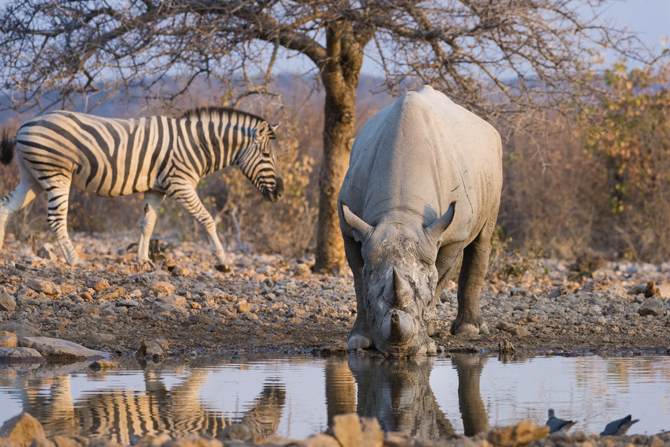
A rhino and zebra take advantage of the waterhole near the Ongava Hide. Photo courtesy of Ongava Lodge.
Would you like to “hide”?
Viewing animals from a wildlife hide is an experience that can be had in many African countries. But it’s not an option at every lodge or reserve.
Ujuzi African Travel can help you plan a safari with one or several hide experiences—each of the sample itineraries below includes opportunities to watch animals from a hide. Contact us to start dreaming up your safari!
Explore Africa on These Safaris

About the author
Anne Medeiros is the founder and operator of Ujuzi African Travel.
Sign up for the Ujuzi Newsletter!
From top travel tips to innovative safaris and conservation movement, get inspired to plan your next African safari!
By submitting this form, you are consenting to receive marketing emails from: . You can revoke your consent to receive emails at any time by using the SafeUnsubscribe® link, found at the bottom of every email. Emails are serviced by Constant Contact


